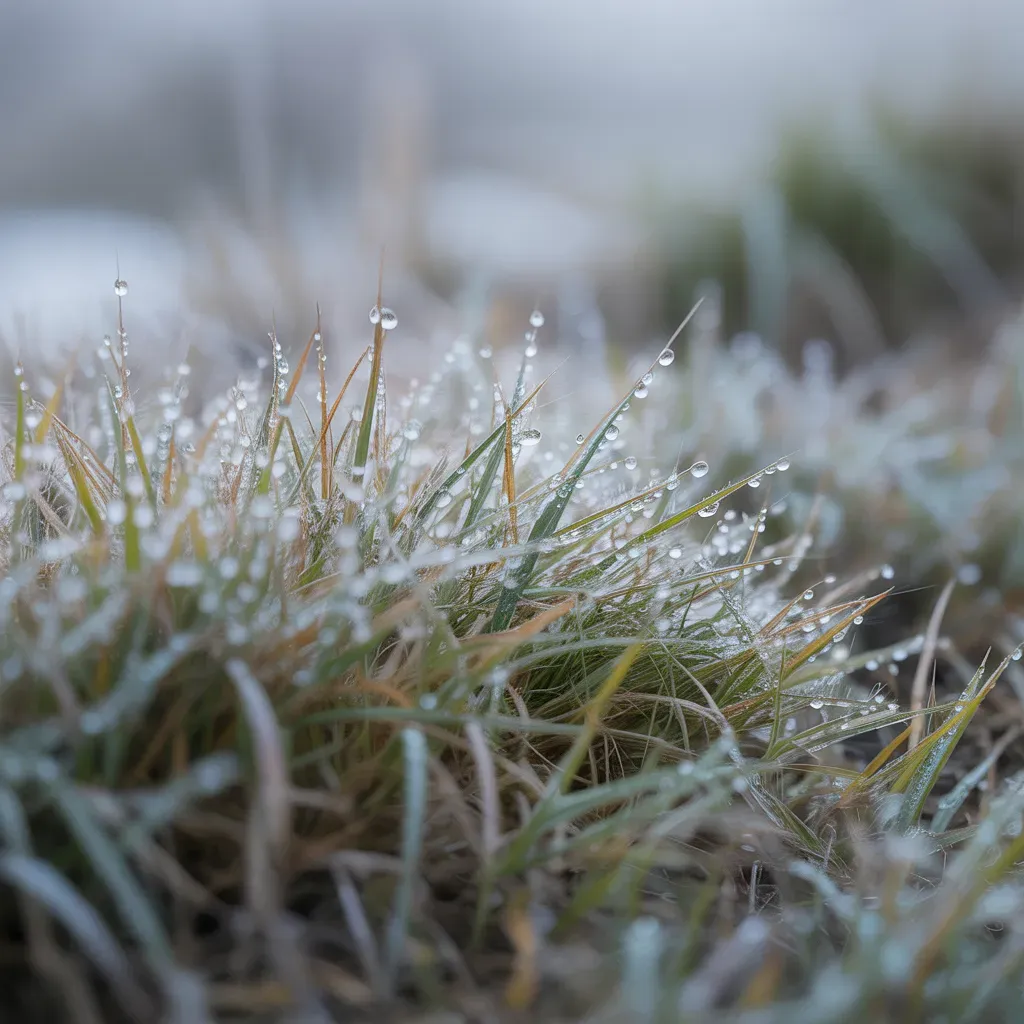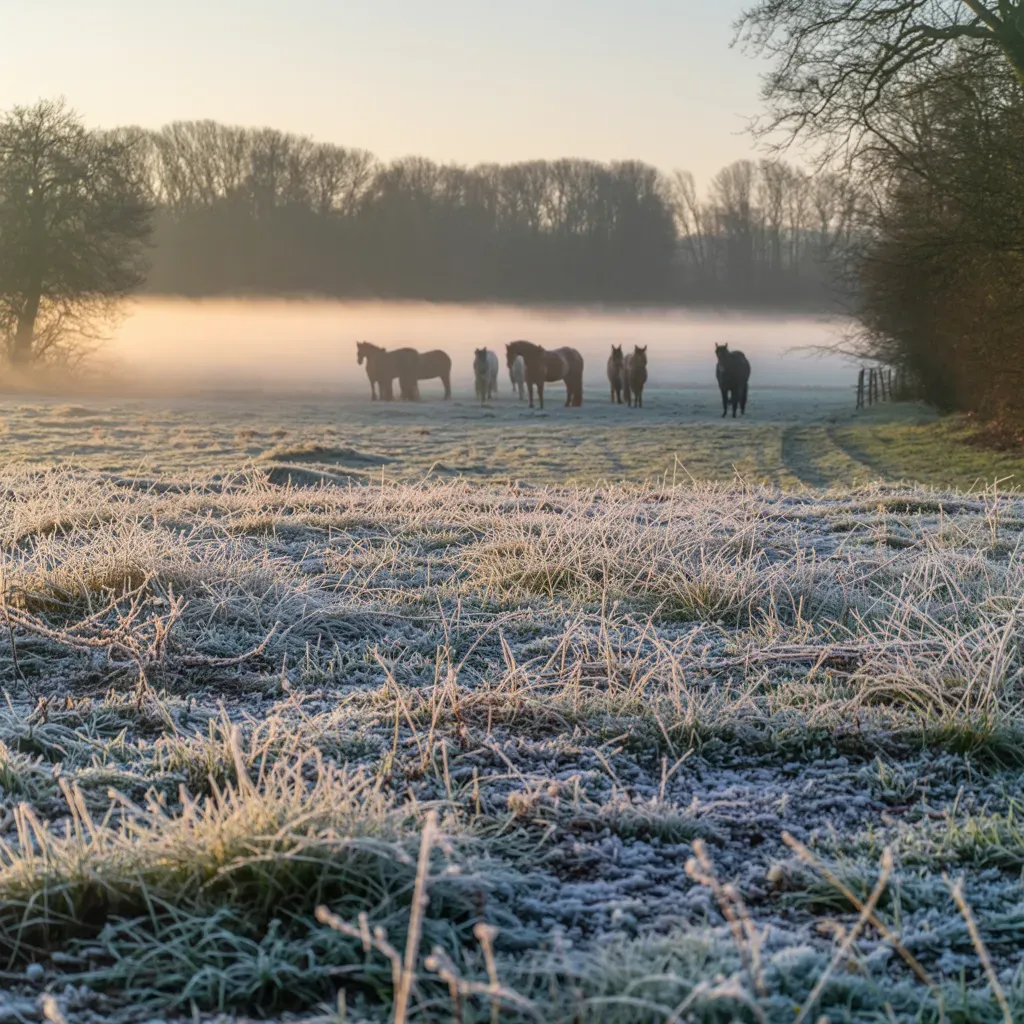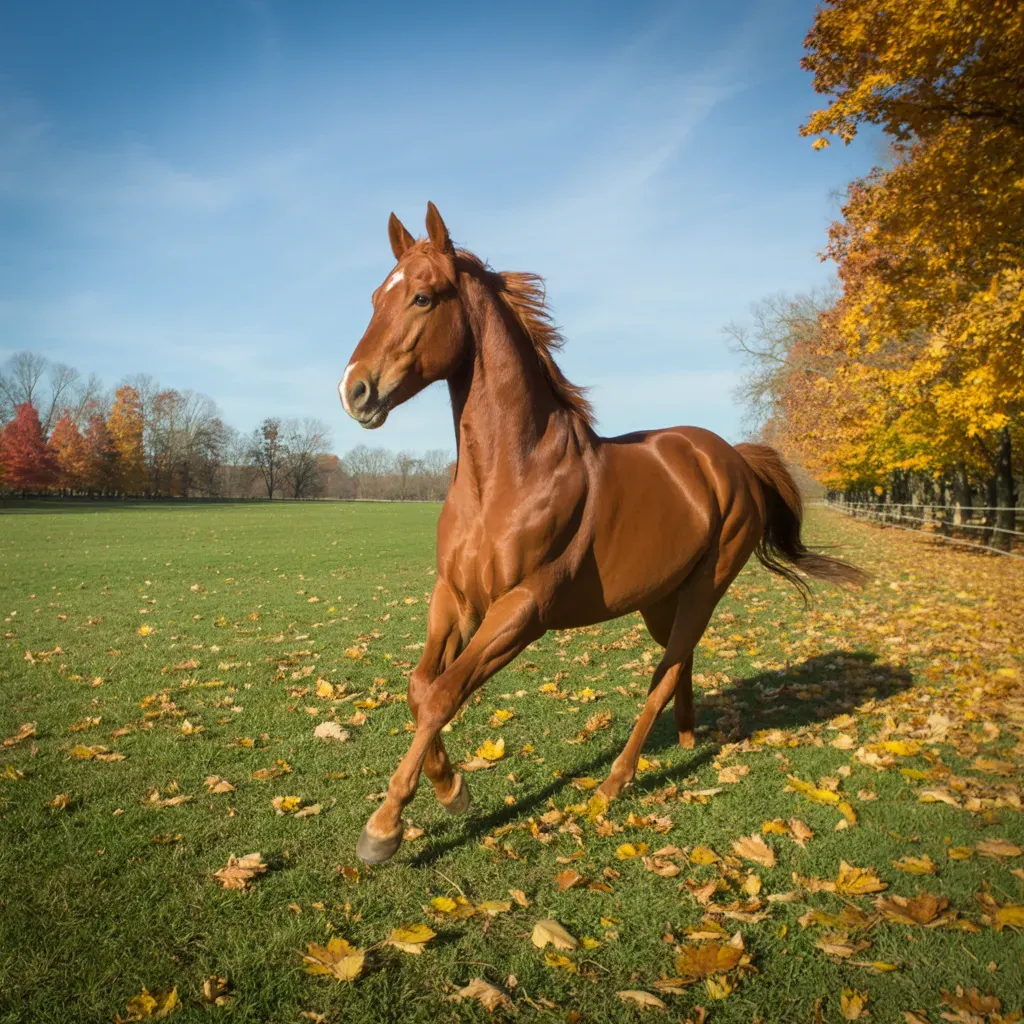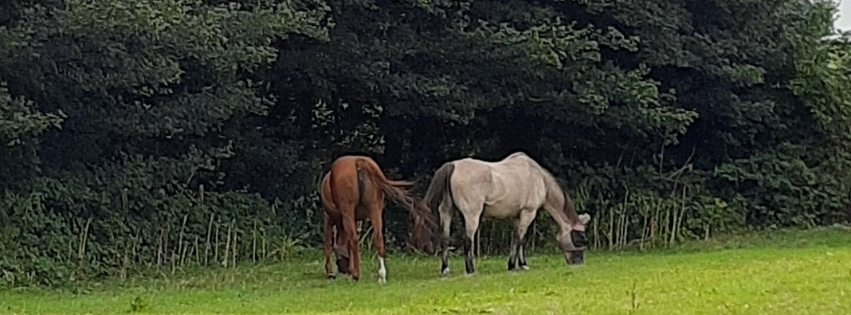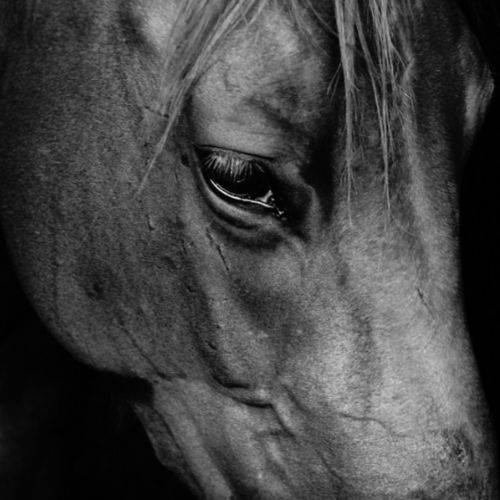Verms
Firstly, here's the scary bit - dozens of species of parasitic worms may reside in our horse's gut to feed, grow and reproduce.
These parasites operate in a vicious circle of events. Horses typically ingest them orally, in their larval stage, by grazing near manure. The larvae travel through the internal organs until they arrive in the gastrointestinal tract where they mature and reproduce. The eggs laid in the digestive tract are passed outside in manure and once outside, the larvae emerge and continue to grow until they are ingested, again, by grazing horses.
However, while the last thing we want is a worm-burdened horse, there are rumblings in the equine world that we're chemically over-worming our horses, with more worms becoming resistent to the various chemicals in the retail worming products. As a result, more of us are now reviewing our worming regimes in an effort to tackle the growing problem of drug-resistant worms.
Not wishing to alarm anyone, but there are also signs that there are side effects, some serious, with chemical wormers. Colic and severe sole sensitivity have been reported, and they can also be significantly toxic to the liver, contributing to lowering immune systems, and killing off beneficial gut microbes. As a result, if you prefer to use chemical wormers, it makes sense to give the liver a good support for 5 days either side of worming; the first 5 days to tone the liver and get it ready for metabolising the chemicals in the wormer to allow them to do their job; the second 5 days to soothe and detox the liver from any harmful effects from those same chemicals.
Parasites can cause colic in several ways. Small strongyle larvae, for example, burrow into the lining of the cecum and colon, where they can live for six weeks to 2 1/2 years. When they emerge they secrete excretory material that irritates the gut. The larvae do further damage as they burrow out of the intestine to breed and lay eggs.Large strongyles are often responsible for the more severe colic attacks. Strongylus vulgaris, one of the most harmful parasites to the horse, invades the main arterial supply of the gut and can constrict or plug up blood vessels, which cuts off blood supply. When the larvae break out of the arterial walls, they enter the bloodstream which can carry them to any part of the small or large intestine. Those that go astray can damage other organs.
Needless to say, parasite control is an essential part we must play in our horse's health.
Worming Naturally
Far be it for me to talk anyone out of their own worming regime or preference, but there are now many natural worming methods available. If you want to go the non-chemical route, or at least use it to help with parasite control, the plant world provides a good selection of natural herbs known to have anti-worm, or ‘anthelmintic’ properties. The advantage of herbs over chemicals is that they come without serious side effects.Anthelmintic herbs have the capacity to destroy and expel intestinal worms and parasites from the digestive system, and come in 4 categories, Vermicides and Vermifuges, and Taeniacides and Taeniafuges.Vermicides destroy worms, with Vermifuges (cathartic) expelling the destroyed parasites from the bowel. Taeniacides are herbs that destroy tapeworms, and Taeniafuges (cathartic) expel them. Cathartic agents are bowel cleansers, cathartic being a substance which accelerates defecation.So, to summarise:
- Vermicides - herbs that destroy worms.
- Vermifuges - herbs that expel worms.
- Taenicides - herbs that destroy tapeworms.
- Taenifuges - herbs that expel tapeworms.Important - many of the most effective Anthelmintics shouldn’t be used due in part to their high toxic properties, so care should be taken when using anthelmintic herbs.
For a natural wormer to work, the blend needs a cathartic agent to loosen the bowels, to work as a laxative to ease defecation, and to clean the gut walls of the eggs and larvae. Also needed is a good demulcent herb to act as a soothing agent to calm any inflamed or damaged tissue, and also to prevent any discomfort that a strong anthelmintic can cause. Finally, the blend needs a stimulant to prompt the herbs to work synergistically together.In addition, some anthelmintic herbs are bitter to taste, and cathartics can be strong, so it's important that the chosen stimulant or demulcent is both palatable and aromatic.
Laboratory tests conducted at the Institute of Organic Research in Switzerland have shown that by Day 5 of feeding, certain herbs show a significant activity with a 79% reduction in egg output, and a 100% cessation of egg hatch. The trials also demonstrated that the anthelmintic activity either killed or paralysed the larvae to prevent them climb up the grass to be eaten by a new host, which contributes to stopping the cycle and preventing worm resistance.
Personally? I worm count via Westgate Laboratories -their service is excellent - and feed my own natural blend.
Useful herbs to support a worming programme
- Cayenne - Cayenne is an overall tonic and digestive aid, but most importantly an excellent catalyst herb that increases the efficacy of almost every other herb or herbal combination.
- Fennel Seed – An effective, palatable carminative and demulcent, and a natural parasite fighter, fennel stimulates stomach and intestinal function, and relaxes the smooth muscle lining of the digestive tract. Fennel is also gently diuretic, promoting healthy functioning of the kidneys and liver.
- Ginger - Effective in combating parasitic infection, ginger helps improve digestion, stimulate appetite, promote saliva production, and relieves flatulent colic, helping to encourage gentle muscle contractions throughout the digestive system, at the same time inhibiting muscle spasms. Ginger is also a useful cleanser and detoxer, and is gently diuretic, further helping to cleanse the body by strengthening kidney function and increasing kidney filtration.
- Psyllium – Known as the ‘colon broom’, psyllium has long been used as one of nature's most effective colon-cleansing dietary fibre, which helps to regulate the bowel and encourages the growth of friendly bacteria.
- Pumpkin Seed – Pumpkin Seeds are said to be very useful for expelling tapeworms, said to be higher in protein than almost any other nut or seed, at around 29%, and are also an excellent source of Zinc and Vitamin A. Their important anthelmintic property is an amino acid, cucurbitin, which is regarded as being a very potent and effective taenifuge, said to make the seed one of the most efficient remedies for killing intestinal parasites, including tapeworms and roundworms, with its zinc content also helping to expel worms. NB. Please note that only human-grade pumpkin seeds should be used, and not those packaged for planting, which will have been treated with insecticides, fungicides and sometimes-powdered fertilizers.
- Sage - Sage’s volatile oils, in conjunction with its bitters and antiseptic properties, induce a relaxant effect on the smooth muscle of the digestive tract, stimulate the appetite, encourages digestive enzymes, and is extremely useful in treating worms.
- Thyme – Thyme has both vermifugal and vermicidal actions, and is used extensively to expel worms.
- Turmeric - Turmeric contains four compounds with anti-parasitic action, which they have strong worm-killing properties. Research has also shown that turmeric has the potential to reduce inflammation and the damage to the intestine caused by worm infestations.
- Artemesia (Wormwood) - One of the most noted anthelmintics, artemesia has been used successfully for threadworms & roundworms, and also an effective tonic for the whole digestive system. A superb energiser, wormwood is an extremely bitter herb with several medicinal qualities, including stimulating appetite, augmenting digestion by enhancing the secretion of digestive enzymes as well as bile from the liver, and inciting peristalsis (wavelike movement of intestinal muscles that propels food along the digestive tract).
NB. Artemesia is extremely bitter and this is due to the volatile oil, which contains Absinthol or Thujone. The herb also contains a bitter glycoside absinthine that is a narcotic. The oil of artemesia is extremely potent and a tiny small dose can cause coma and death in an adult person. The use of artemesia should always be the DRIED PLANT MATERIAL and not the essential oil, which is extremely concentrated and should NOT be used. Please also note that artemisia cina and chenopodium ambrosiodies (wormwood and wormseed) can be confused with either other. Wormseed should not be ingested!I
It's also recommended to feed
Garlic alongside your worming program, for roundworms, pinworms, tapeworms & hookworms. Garlic has a well earned reputation of enhancing immunity and warding off all kinds of worms. In a recent scientific study, garlic was tested against Ivermectin and proved to be a very useful as an alternative treatment against parasites in animals and humans. Garlic has been used as an anthelmintic for centuries, with its antibacterial, antimycotic and lipid-lowering effects, all scientifically proven over time to be extremely medicinal in many different ways. Garlic is also a powerful detoxifier and diuretic, which is extremely useful during worming. It stimulates the lymphatic system to throw off waste materials and strengthens blood vessels, and is a powerful antibiotic that destroys harmful bacteria and leaves behind beneficial bacteria for the body to utilise as an infection fighter.
The reason I recommend you feed your own garlic is that raw garlic cloves are the most medicinal to use. They contain the highest amount of oil compared to dried garlic, with the main active ingredient in garlic being alliin, which is converted to allicin when the fresh clove is crushed. Allicin is an antifungal and antibiotic compound, and is also what gives garlic its pungent smell. Dried forms of crushed, chopped or powdered garlic don’t have anywhere near the potency of fresh garlic, so it is recommend that fresh bulbs/cloves are used. Crush a couple of cloves into the feedbowl just before feeding for each day of the worming program.
NB. Garlic has received some bad press in the past about causing gastric upset in horses. However, provided it's not overfed in large quantities it's perfectly safe to feed.
Note: Originally written around 2010

